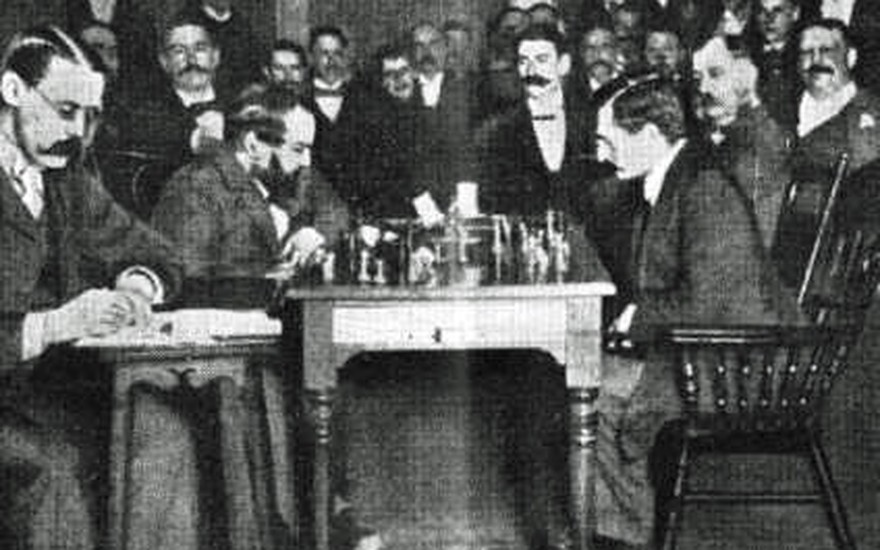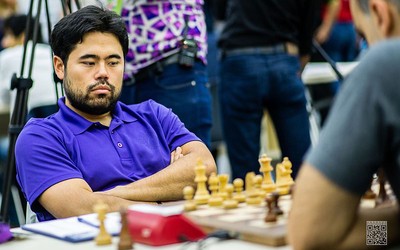
Public Domain, https://commons.wikimedia.org/w/index.php?curid=505669
The World Champions' Weirdest Pets - Wilhelm Steinitz and the Dutch Defense
This series of articles will cover some of the weirdest openings world champions have played consistently.Donations are much appreciated. All of my content and writings will be free forever according to the "Truthdoc code" (to be published some time next year) - help keep such content going strong :). Donate
Introduction
Steinitz, the first official world chess champion, is very much seen as the father of the classical school of chess. Therefore, Steinitz's games are mostly devoid of "weird openings." However, every chess player, no matter their strength, has their weird tastes, so the reader will be happy to know that there will be four articles covering Steinitz's weird opening adventures - one on the Steinitz Attack, the second on the Dutch Defense, the third on the Vienna Game, and the fourth on the King's Gambit. I must mention that "early Steinitz" was very much a swashbuckler, and the positional Steinitz only appeared in the second half of his career.
First of all, we must define what a "weird opening" is. There's no clear-cut definition, but to me, a weird opening is any opening that is: a) almost never played at top level (in the 21st century! - circa 2021) and b) breaks known opening principles and generally goes against the "classical" principles Steinitz himself had helped create / bring into focus. For example, the King's Gambit would be a normal opening in Steinitz's time, but it's definitely a "weird opening" in the 21st century as it's almost never played by any top player, and no top player plays it consistently. Without further ado, let's explore Steinitz's love for the Dutch Defense!
The Dutch Defense and the Staunton Gambit
Note: The variations covered will only deal with those that were played in the games featured in this article.
Remember that this is the 19th century, so, usually, instead of meeting Steinitz's Dutch Defense with the mainline kingside fianchetto, Steinitz's opponents instead played the Staunton Gambit among other sidelines. Thus, we will look at both the Dutch Defense as well as the Staunton Gambit.
The Dutch Defense:
The Staunton Gambit:
Steinitz's love for the Dutch Defense didn't just end with it as an opening. Indeed, Steinitz employed the Dutch as some sort of universal system against several openings. I'll give three games which showcase the "Dutch universal system," but will not be annotating the games because the main focus of this article is the Dutch Defense proper.
Against 1. e3:
Against 1. c4 (the English):
A Crushing Victory
We're familiar with Zúpide by now, but I don't think we're all that familiar with fearless Zúpide! Fearless Zúpide makes an appearance in this game as he attacks Steinitz's king, but Steinitz is up to the task and uncorks a brilliancy!
10...Qg8 is such a beautiful move! Steinitz's queen shuffle on moves 9 and 10 was simply out of this world - 23rd century chess in the making!
A Devastating Defeat
A loss in the Dutch?! No such thing! Seriously, though, out of the 7 Dutch games Steinitz played, 0 losses were recorded.
A Slugfest
Gustav Neumann was a German chess master and a well-dressed gentleman (look it up!). Despite not being a household name, Neumann was one of the strongest chess players in the mid- to late-1800's, having defeated the likes of Zúpide, who we've seen in the first part of this series on Steinitz, as well as Winawer. Let's see how he fares against Mr. World Champ:
The "sluggiest" of all slugfests! This, ladies and gentlemen, is why we have the threefold repetition rule!
A Hard-Fought Draw
Hieronim Czarnowski was a Polish chess master who was also a social activist. If you're interested, you can read more more about his activism on several websites (I was certainly interested!). Now, for the chess...
Steinitz got a really excellent position from the opening what with the queen being in prime attacking position on g6 and the light-squared bishop patrolling the long diagonal from b7. However, with very enterprising and tactically sharp play by Czarnowski, the game ended up being drawn. Czarnowski himself even had some chances to win the game, but, considering the way the game transpired, a draw was a fair result!
A Peaceful Game
It's anathema to me to call this game a peaceful game, but it was a relatively short draw and quite a forced game, so I'll allow myself this indulgence. Steinitz's opponent was none other than Joseph Henry Blackburne, one of the top players in the world at the time (and possibly the world's second best player at some point - at least according to ChessMetrics) and a popular and iconic chess figure. Let's see how these two giants decide on peace:
This was definitely not one of the most exciting games, especially considering the two players who were behind this game, but you can't always have swashbuckling chess on the menu!
Test
Refute White's 10. Bxh7.
Save the game!
Those doubled pawns sure do look handy...
Razor-sharp!
Just as sharp
To greener pastures
To trade or not to trade
Conclusion
In conclusion, Steinitz's love for the Dutch was not a one-way street. The Dutch rewarded him with some scintillating victories, and he never even lost once as Black in the Dutch Defense. Due to his transformation into a positional and principled master, though, he had to give up the Dutch Defense. Unfortunate! We can only imagine what brilliancies Steinitz would have kept on producing had he continued playing the Dutch Defense...
More blog posts by FischyVishy

Attacking Chess Patterns: Grand Prix, Queen(1) Attack, and Grand Thorn
In this series of articles, I list and explain all kinds of chess patterns. Chess patterns are recur…
Why Bughouse Is Good for the Environment
Bughouse — Give it a try if you care about planet Earth.
Nakamura's Secret Weapon Against the Réti Opening - The Ideal Center (Part 2)
In this series of articles, we will deeply analyze a very interesting and novel setup that Hikaru Na…
